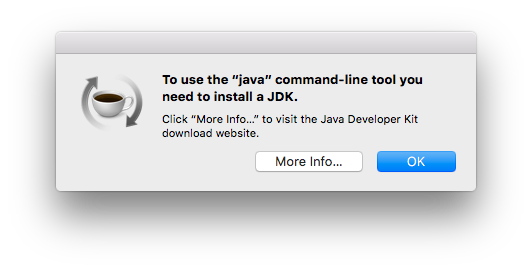

It’s because some applications, games and websites still only work with Java 6. Examples of people that may still need Java 6 are those trying to access some government sites, some online games and Android programmers that require Java 6 to develop Android apps on Mac. Or the Java applet crashes with an error message such as:Ĭom.: (.) Service exited with abnormal code: 1 If you find that Java apps or applets will either refuse to run or open briefly before crashing giving you an error message such as “This application requires the legacy Java SE 6 runtime which is unavailable for this version of OS X”:
Install java mac os sierra update#
Note: You will have to deactivate SIP when new updates for Java are released as Java will not update while SIP is enabled. Rootless SIP is then renabled on your Mac.To re-enable System Integrity Protection, follow exactly the same procedure except type: csrutil enable.Your Mac will then restart with SIP disabled and you can try installing Java again. Select the “Utilities” menu and then “Terminal”.Restart your Mac when the screen turns black hold down ⌘R until the Apple logo appears.

If your Mac is blocking the installation of Java, follow these instructions to disable rootless SIP and try again:
Install java mac os sierra install#
Java has such a bad rep on Macs that Apple has made it increasingly difficult to install it and other things that can potentially damage OS X. If you run into problems during the installation of Java, it’s because Apple has added an extra layer of security to Macs known as Rootless SIP. Java Installation Problems in El Capitan, Sierra & High Sierra If you find that you already have Java 1.6 installed, scroll down below “How to update Java 6 in El Capitan” as you also need to install a special update from Apple. If Java is on your Mac, you’ll see a message saying something like “Java (TM) Runtime Environment” in this case version 1.6 (or Java 6 as it is commonly known). If you’re not sure whether Java is installed on your Mac, simply search for Terminal in Spotlight and type: java -version at the command prompt. If you’ve never installed Java on Mac, then you can simply download and install the latest version of Java from Oracle which is known as Java 8 but rather confusingly officially called Java 1.8 by Oracle. It’s because an application you have installed or a website you’re trying to access requires Java to launch or work properly. To use the “java” command line tool you need to install a Java SDK


 0 kommentar(er)
0 kommentar(er)
